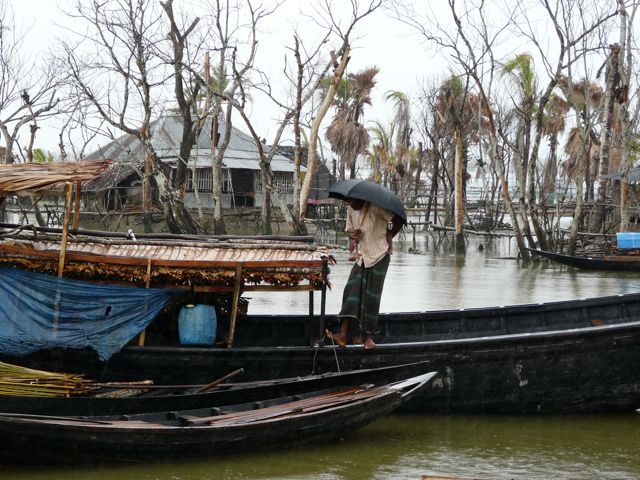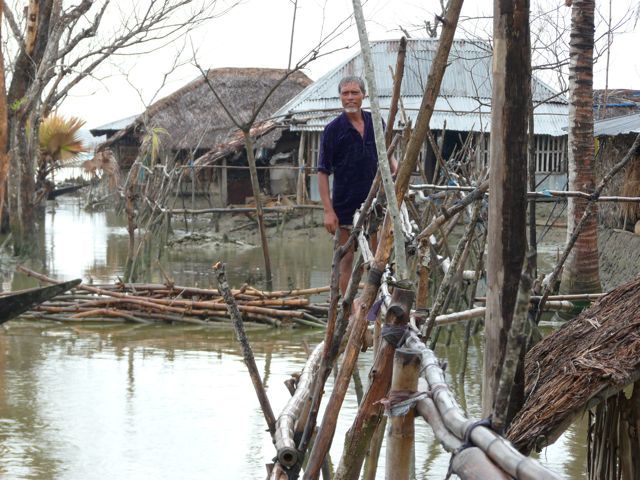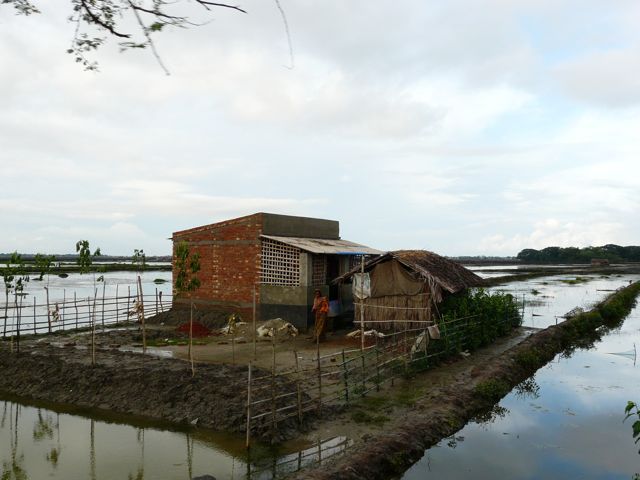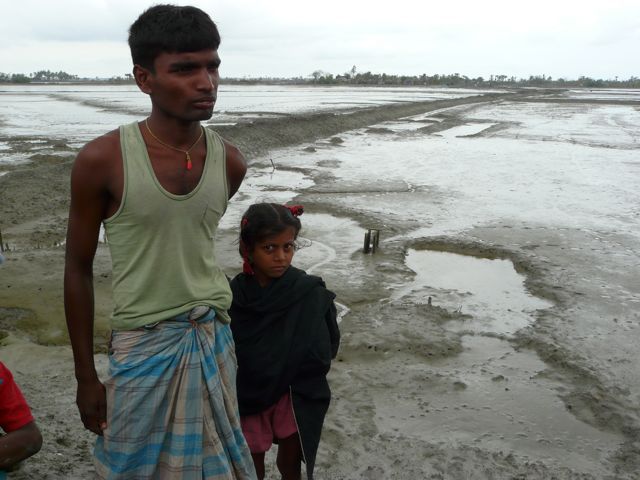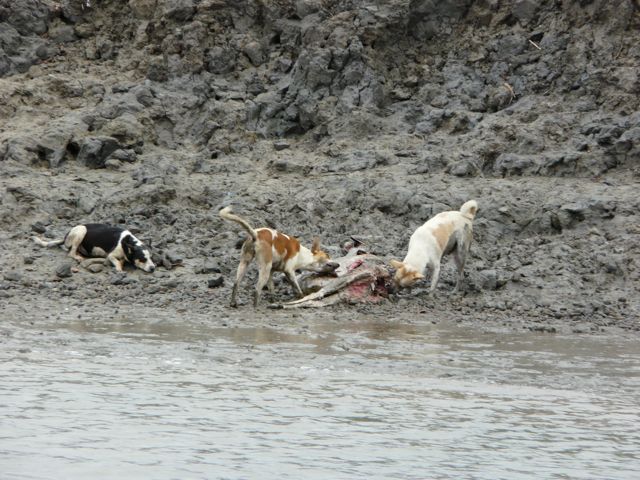Satkhira district nervously awaits the next "mega-cyclone."
We came to the town of Koyra in this southern corner of Bangladesh to follow up on a news story about how river erosion had suddenly collapsed several houses, sweeping away a five-year-old girl in the process. These kinds of stories appear with alarming regularity, meriting only small mention in The Daily Star, Bangladesh's leading English newspaper.
If Bangladesh is the "front line" of climate change, the southwestern part of the country, including the famous Sundarbans mangrove forest, is the front row of the front line. The combination of rising sea levels and increasingly powerful and frequent cyclones has left the region clinging to the edge of survival. In May 2009 Cyclone Aila struck at high tide, and the storm surge filled every low-lying area with sea water – and so it remains today. It now resembles a grid of graph paper, with the lines being narrow roads and embankments that are built up, and everything else inundated with brackish green water.
We stayed in a guesthouse in Munshigonj, the farthest point you can reach by car before hitting the Sundarban forest, which is only penetrable by boat. From there it was a two-hour boat ride to Koyra, then a 15-minute ride on the back of a flatbed pedal rickshaw to the remains of the town.
Koyra has never recovered from Aila, and as storm clouds gathered, for me it conjured a "hell on earth" vibe. Water fills the "town square," and the only places not covered with sewage-mixed water are the mud road that winds through town and the few buildings built up high enough to not currently be inundated. Three kids were swimming in the town square as we shot an interview with an official about the five-year-old girl who had been lost when her family's home collapsed into the river. As he talked, a biblical rain fell, and the water crept up behind him. We ended the interview quickly to step up onto the elevated porch of the mold-covered local government building.
To get to their huts, most people in town now have to walk on paste-like mud that is as slippery as ice, then traverse bamboo pole bridges (a single pole plus handrail) that lead to their homes. The few remaining trees are turning brown from the salinity. As we walked through town, a beggar with a thousand-mile stare tackled my leg. He was weak and easily evaded.
We passed two schools in the town, both with water filling the yards and both closed. We could not determine whether the schools were closed due to flooding or due to government mandate – the answer to both questions was "yes." A week earlier, the national government had declared that all schools in the country must close for the month of Ramadan in order to ease traffic congestion in Dhaka. There are no motorized vehicles in Koyra, except for boats and motorbikes, so traffic is not a problem here, but the nationwide school-closing edict is symptomatic of how centralized (and Dhaka-centric) Bangladesh's government has become.
On the boat back to Munshigonj, we passed dozens of mud embankments. Following Aila, the government built these barriers and gave out plastic tarps to survivors who had nowhere to go. This is where they remain.
We stopped the boat at a place called Ghogher Para, dotted with bright orange tarps, to talk to the residents. A sure-footed man accompanied me all the way from the boat up the slippery embankment, holding my arm so I wouldn't fall in the mud, as a crowd watched with amusement at the possibility. These people grew rice until the salt water intrusion made that impossible; then they farmed shrimp until the salinity increased too much for that; now they fish, but overfishing has greatly reduced catches, and they face tiger attacks if they venture into the mangrove forest swamp, where the best fishing is now found.
Water and mud are all around. I asked Modhu Kumar Shordar, a fisherman, what they will do if there is another cyclone. "We will die," he responded.
